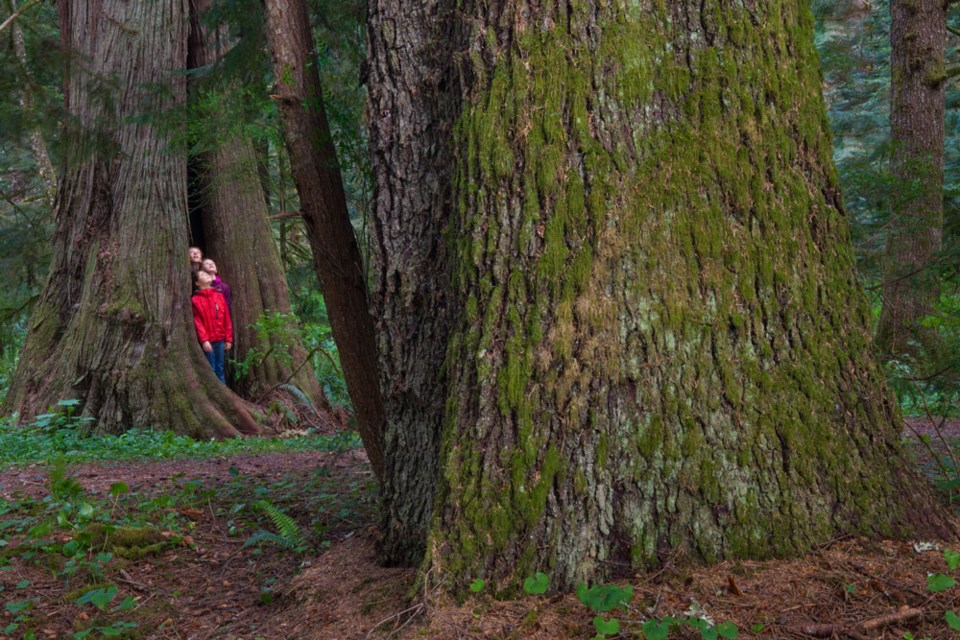It's no surprise to most that British Columbia is known for its rich biodiversity, and as such, is the most biologically diverse province in Canada.
With this notable distinction, comes the tall order of protecting B.C.'s natural riches, the wild places and the countless species that inhabit them, which happens to be the highest number of any 91原创 province or territory.
However, 43% of these species are on watch lists due to low or dwindling populations, and saving their habitat is the first step in protecting B.C.'s wildlife, fish and plants.
Since 1971, , the leading non-profit land conservation organization, has been protecting critical habitat in B.C.
Driven by an exceptional group of professionals with a passion for conservation, The Nature Trust is dedicated to through securement, restoration, and management of ecologically significant lands. They have in the most sensitive, rare and endangered ecosystems in the province.
"By securing and managing carbon rich ecosystems, we provide a tangible route to fighting climate change and biodiversity loss," says Dr. Jasper Lament, CEO, The Nature Trust of BC.
"Land conservation is one of the strongest tools for nature-based solutions to fight both climate change and biodiversity loss, and that's done through targeted protection of land. Forests, grasslands, wetlands, and estuaries are the most productive ecosystems to fight climate change because they're carbon sinks. They're also the most biodiverse ecosystems we have in the province."
Targeting rare ecosystems
The Nature Trust purchases rare lands with rare ecosystems or high biodiversity values for conservation—private land that is undisturbed or has the ability to be restored.
Their first land acquisition on 91原创 Island was in 1975, and have consistently added to conservation complexes ever since. They have focused a lot of their efforts on the east coast of 91原创 Island, which includes the second rarest ecosystems in Canada, identified as the Coastal Douglas-fir zone.
"Our current priority project we're fundraising for in that region is to protect 95.6 acres of mature Coastal Douglas-fir forest on Denman Island," reveals Lament.
"The property is adjacent to a Denman Conservancy Association conservation area called Central Park and the Denman Island Provincial Park and Protected Area. Once purchased, this ecologically valuable conservation complex will increase to 462 acres, increasing connectivity and ensuring that it will never be sold or developed."

Four ways you can participate in biodiversity conservation
1. Make a donation to The Nature Trust of British Columbia
You can support the priority project, or consider the many other ways to to conserve critical habitat for wildlife, fish, plants, and future generations.
2. Be a mindful gardener
Be aware of what you're planting and ensure it's not an invasive species, a big problem on 91原创 Island. Attract 'good' insects by planting pollen and nectar plants. Use natural products and methods for pest control.
3. Learn as much as you can about nature and share your knowledge with others
Visit ecological interpretation centres, natural history museums, and native fish hatcheries to study local ecosystems. Volunteer at an organization that focuses on conservation or restoration of habitat.
4. Use environmentally-friendly products
Dispose of hazardous material safely. Chemicals that enter the sewer system can contaminate freshwater and ocean ecosystems.
"I encourage people to get involved in their community and in the naturalist community in their area," says Lament. "Check out groups that steward the land, conduct nature cleanups, shore cleanups, and volunteer with your groups that are actively working on the land, like the parks, and learn about biodiversity in your area."
For more information, and to see the of how you can participate in biodiversity conservation, visit



